|
|
|
|
|
|
|
| . . Homepage. . . . What We've Been Up To. . . . About Me & Al. . . . Teddington. . . . Pictures. . . . Puzzles. . . . Puzzles Too. . . . Music. . . . Misc. . . . My Films. . . . Credits etc. . |
|
||||
|
|
||||
|
Produced by American puzzle collector Jerry Slocum, this is the definitive guide to puzzle companies, collectors, shops, and suppliers and a limited list of web sites. New edition now available.
100s of diagrams and puzzle details plus 6 colour pages of puzzles from the Hordern/Dalgety collection.
The prolific David Wells has compiled a book that lists close to every known fact about every known number from -1 to 3^^^3, 'Graham's number'. It does, however, omit 'Martin's number', which is equivalent to (Graham's number+1)...
The book shown here is Puzzle Craft by Stewart T. Coffin, the 1993 Trevor Wood-published UK reprint.
A small Pelican-published book, designed 'to convince the general reader that mathematics is not a forbidding science'. Chapters on Geometry, Algebra, Calculus, square root of minus one.
Much more mathematical in content than David Wells's Puzzle book (see below) this is intriguing for anyone interested in shapes and tessellations, polyominoes and patterns, kites and cubes, rings and reptiles, cairos and chords. Something for the novice and the professor.
This is a full 1958 reprint of the original 1919 classic. It is beautifully illustrated with countless line drawings. Entertaining stories set the scene for each puzzle. The first section of puzzles is based on the idea that the Canterbury Pilgrims set puzzles for each other. (The word canter, the gait of a trotting horse is derived from the way the pilgrims road to Canterbury.)
Currently in print, this book has nearly 600 puzzles, covering every genre. It is an excellent introduction to puzzles and recreational maths. It contains puzzles from Lewis Carroll, Henry Dudeney and Sam Loyd and many others.
These two books are wonderful. Originally published in the late 1940s, they are classics of their kind. They are of interest to puzzlers and craftsmen alike. The intro to the first says, This collection of puzzling constructions in wood is offered to teachers of woodwork as a set of supplementary shop projects. It includes instructions on making dissections, tangrams, sliding puzzles, the well-known 'What shape wedge fits these three holes' puzzle, burrs, a great pagoda, impossible dovetails, and simple secret-opening boxes.
|
|||||||||||||||
|
|
| [Homepage] [What We've Been Up To] [About Me & Al] [Teddington] [Pictures] [Puzzles] [Puzzle News] [My Designs] [Collection on Flickr] [London Puzzle Party] [POTM] [Prague Puzzles] [Prague Puzzle Shops] [Misc Puzzle Stuff] [Puzzle Suppliers] [Mailbag] [Puzzle Bags] [Puzzling People] [Puzzles Too] [Music] [Misc] [My Films] [Credits etc] |
 |
|
|
|
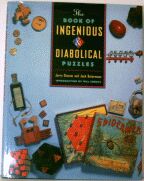
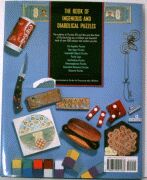
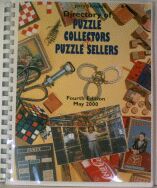
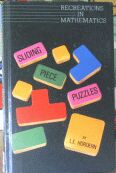 One of the most sought-after puzzling books of the last 20 years, this book by the late Edward Hordern presents the story of Sliding Piece and sequential movement puzzles, from the very earliest 15-puzzle and traditional problems, to modern ones which may never have been manually solved.
One of the most sought-after puzzling books of the last 20 years, this book by the late Edward Hordern presents the story of Sliding Piece and sequential movement puzzles, from the very earliest 15-puzzle and traditional problems, to modern ones which may never have been manually solved.  Just a small cheap paperback, volume 3 in a series, I don't know where it came from, but it is interesting and covers a good range of 'in the pub for a pint of beer' puzzles games and tricks, including dissections, dice mazes, card tricks, stunts, tangrams, disentanglements etc. Volumes 1&2 cover Mazes & Labyrinths, and Number Puzzles, but I've never seen either.
Just a small cheap paperback, volume 3 in a series, I don't know where it came from, but it is interesting and covers a good range of 'in the pub for a pint of beer' puzzles games and tricks, including dissections, dice mazes, card tricks, stunts, tangrams, disentanglements etc. Volumes 1&2 cover Mazes & Labyrinths, and Number Puzzles, but I've never seen either.

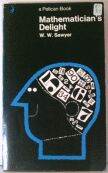

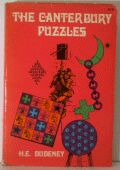

 A quite remarkable 64-page book, published by Tarquin, with very detailed instructions on folding multiple sheets of paper, often A4, to make various polyhedra. The art is described as modular paper folding. It even made me aware of the fact that A4 sized paper is of the proportion 1 to the square root of 2. Just looking at it to write these notes, makes me want to start making a dodecahedron out of 12 sheets of paper...
A quite remarkable 64-page book, published by Tarquin, with very detailed instructions on folding multiple sheets of paper, often A4, to make various polyhedra. The art is described as modular paper folding. It even made me aware of the fact that A4 sized paper is of the proportion 1 to the square root of 2. Just looking at it to write these notes, makes me want to start making a dodecahedron out of 12 sheets of paper...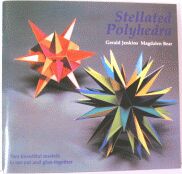 These two books, both from Tarquin, allow you to cut and construct truly wonderful polyhedra, the sixth and final stellations of the icosahedron, a compound of ten tetrahedra and a compound of five cubes, the latter having 360 faces. Yes you read that correctly.
These two books, both from Tarquin, allow you to cut and construct truly wonderful polyhedra, the sixth and final stellations of the icosahedron, a compound of ten tetrahedra and a compound of five cubes, the latter having 360 faces. Yes you read that correctly. 
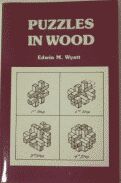
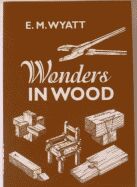 The latter features Edwin Mather Wyatt presenting a fascinating collection of puzzles, curiosities and woodworking projects. "These classic designs originated in an era when simple amusements were more commonly embraced... They have left a lasting legacy for us all to enjoy...It was published just as TV first appeared. It is hoped that its republication, 50 years later will reawaken a dormant interest in the simple pleasure of making and solving classic wooden puzzles." It features the 2-piece pyramid, dissections, sequential movement and sliding puzzles, burrs, dovetails, an impossible ball in a cage, more impossible objects, and secret-opening objects.
The latter features Edwin Mather Wyatt presenting a fascinating collection of puzzles, curiosities and woodworking projects. "These classic designs originated in an era when simple amusements were more commonly embraced... They have left a lasting legacy for us all to enjoy...It was published just as TV first appeared. It is hoped that its republication, 50 years later will reawaken a dormant interest in the simple pleasure of making and solving classic wooden puzzles." It features the 2-piece pyramid, dissections, sequential movement and sliding puzzles, burrs, dovetails, an impossible ball in a cage, more impossible objects, and secret-opening objects.